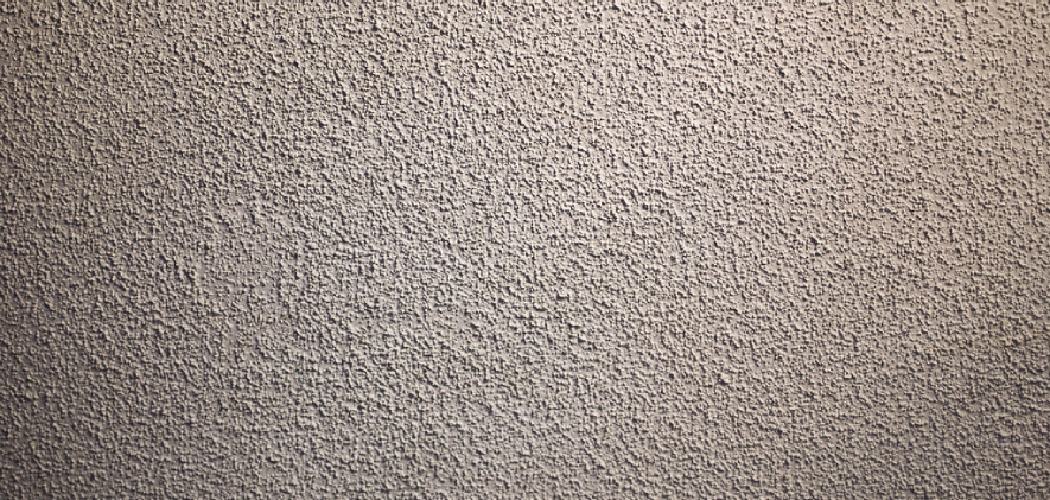The popcorn ceiling was popular in the mid-20th century because of its textured look and sound-absorbing qualities. However, the trend lost popularity due to the potential health risks associated with asbestos, which was widely used in home construction up until the late 1970s. Despite being banned in many countries, the material can still be found in homes and buildings. So, if you’re unsure about your popcorn ceiling, here’s how to tell if your popcorn ceiling has asbestos.
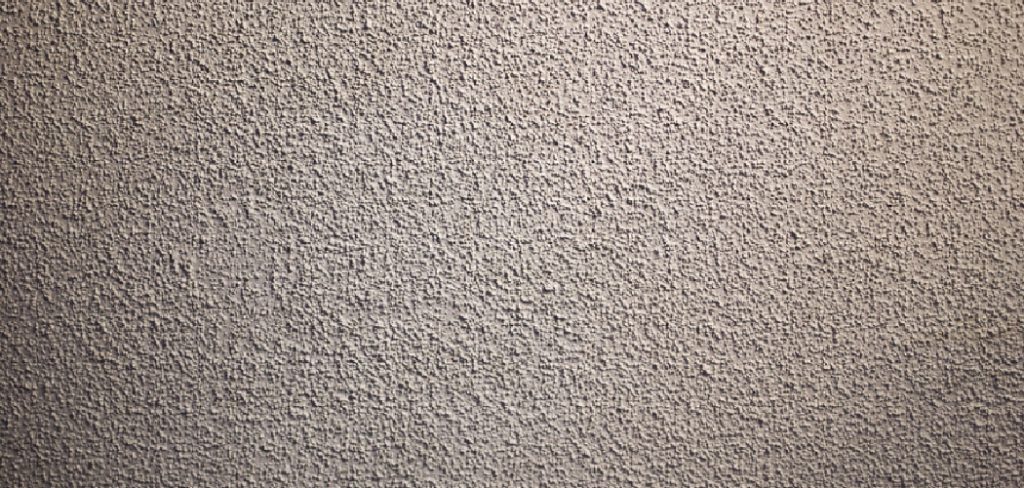
What Are the Key Indicators that My Popcorn Ceiling Might Contain Asbestos?
If you live in an older home that was built before the 1990s, there’s a chance that your popcorn ceiling contains asbestos. Before you start worrying, know that not all popcorn ceilings are made with asbestos-containing materials.
However, if your popcorn ceiling was installed before the 1990s and hasn’t been replaced or remodeled since then, it’s important to look for key indicators that may suggest the presence of asbestos. For example, if your popcorn ceiling has a creamy white, gray, or light yellow appearance, it may contain asbestos fibers.
Additionally, if your popcorn ceiling has a texture that resembles cottage cheese or has a lumpy appearance, this may also suggest the presence of asbestos. If you’re unsure whether your popcorn ceiling contains asbestos, it’s best to have it tested by a professional before renovating or repairing.
Is Your Popcorn Ceiling Hazardous? How to Tell if Your Popcorn Ceiling Has Asbestos
1. Age of the Ceiling
The age of your popcorn ceiling is the first factor to consider. Asbestos was a common ingredient in popcorn ceilings from the 1950s to the 1980s, when it was phased out due to health concerns. If your home was built before or during this period, then there’s a high probability that the ceiling is made of asbestos.
2. Appearance of the Ceiling
The textured appearance of popcorn ceilings makes it difficult to determine its material composition. However, asbestos-based ceilings have a unique characteristic look that can be differentiated from non-asbestos ceilings. Asbestos fibers are irregularly shaped, so the ceiling is patchy and uneven.
3. Lab Testing
The simplest and most reliable way to confirm whether your popcorn ceiling contains asbestos is by conducting a lab test. Collect a small sample of the popcorn texture from the ceiling and send it to an EPA or state-certified lab for analysis. Testing should be done by a professional, and you shouldn’t disturb the ceiling until the results return.
4. A Professional Inspection
Asbestos is a dangerous material and should be handled with utmost care. If you’re unsure about your popcorn ceiling’s composition, contact a licensed professional to inspect it. They have the necessary expertise and equipment to determine whether asbestos is present in your ceiling and provide proper guidance and advice on proceeding.
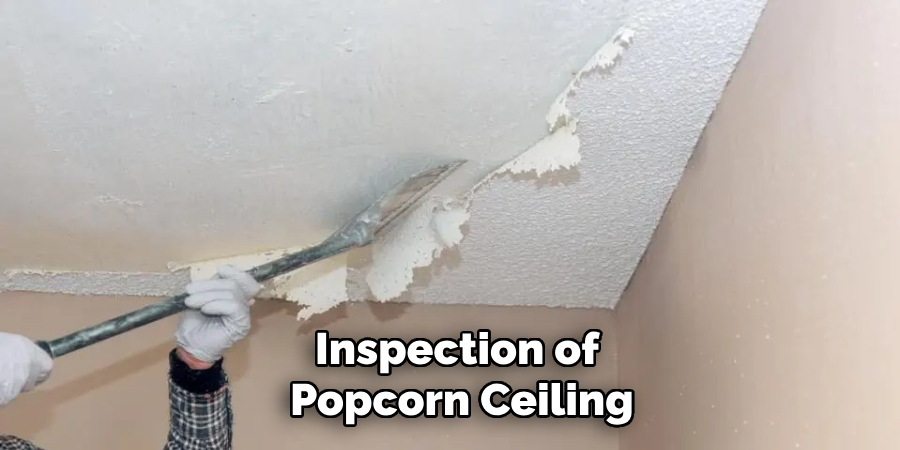
5. Date of Last Renovation
If your popcorn ceiling was last renovated after the 1980s, then there’s a low chance it contains asbestos. Asbestos was discontinued in building materials during this period due to its adverse health effects. However, if you’re still unsure, getting a professional opinion is best.
6. Location of Your Home
Asbestos was widely used in homes built between the 1950s and the 1980s, but its usage varied depending on the region. If your home is located in an area where asbestos is frequently used in construction materials, then there’s a higher chance that your popcorn ceiling contains asbestos.
7. Signs of Damage
Asbestos-containing materials are generally safe if they’re in good condition and not disturbed. However, if your popcorn ceiling shows signs of wear and tear, such as cracks or water damage, then it’s crucial to contact a professional for testing and removal if needed. Asbestos fibers can become airborne when disturbed and pose a risk to your health.
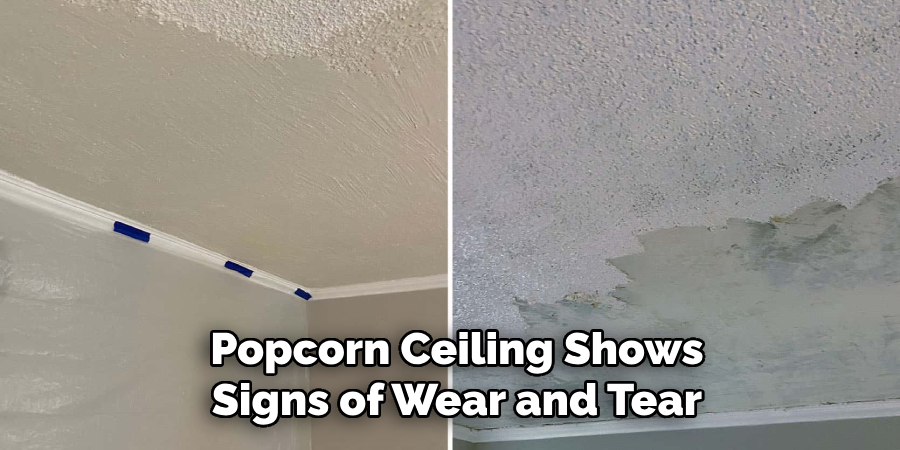
Ultimately, proper inspection and testing is the best way to determine whether your popcorn ceiling contains asbestos. If you’re still unsure, it’s always best to err on the side of caution and contact a professional for advice. Remember, asbestos is a hazardous material, and proper handling and removal procedures should always be followed to ensure the safety of yourself and others in your home.
So, if you suspect that your popcorn ceiling may contain asbestos, take the necessary precautions to keep yourself safe and seek professional help for further guidance. It’s better to be safe than sorry when it comes to asbestos.
Can I Perform an Asbestos Test on My Popcorn Ceiling at Home?
Popcorn ceilings were a popular design element in homes from the 1950s to the 1980s. However, they can contain asbestos, which poses a serious health risk if inhaled. If you’re concerned about the presence of asbestos in your popcorn ceiling, you may be wondering if you can perform an asbestos test at home. The answer is yes, but it’s important to note that DIY testing kits may not be reliable and can even release dangerous asbestos fibers into the air.
Hiring a certified asbestos inspector who can safely and accurately test your popcorn ceiling and guide you on the next steps is always recommended. Don’t take any chances with your health – consult a professional if you suspect the presence of asbestos in your home.
What Are the Dangers if Asbestos Is Present in My Popcorn Ceiling?
If you’re like many homeowners, you may be surprised to learn that asbestos was once commonly used in building homes – including in popcorn ceilings. Unfortunately, asbestos exposure can pose serious health risks, including lung cancer, mesothelioma, and asbestosis.
If your popcorn ceiling contains asbestos, attempting to remove it yourself can be more hazardous than simply leaving it in place. Disturbing the material can release tiny fibers into the air, where they can be inhaled and cause long-term damage to your health. If you suspect asbestos may be present in your popcorn ceiling, it’s important to hire a licensed professional to handle the removal process safely and effectively.
What Precautions Should Be Taken if I Decide to Remove the Popcorn Ceiling Myself?
1. Wear Protective Gear
If you decide to remove a popcorn ceiling yourself, it is important to wear the proper protective gear. This includes safety goggles, a respirator mask, and gloves. Safety goggles will protect your eyes from any dust or debris that may be stirred up during the removal process.
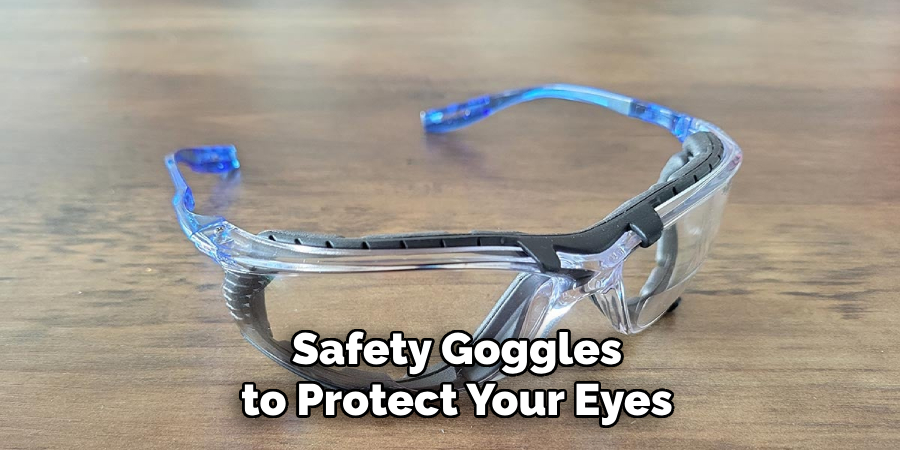
A respirator mask is important to prevent you from inhaling any of the asbestos fibers that may be present in older popcorn ceilings. Finally, gloves should also be worn to protect your hands from any sharp objects or hazardous materials that may be present.
2. Prepare the Room
Before starting the removal process, it is important to prepare the room for the project. This includes removing all furniture and decorations from the room and covering any exposed surfaces with plastic sheeting or drop cloths. It is also important to open all windows in order to ensure proper ventilation during the removal process.
3. Protect Your Skin
When removing a popcorn ceiling, it is important to protect your skin as well as your eyes and lungs. Wear long sleeves and long pants to protect your skin from any dust or debris that may be stirred up during the removal process. Additionally, it is also recommended that you wear a hat to keep dust out of your hair.
4. Use Proper Tools
When removing a popcorn ceiling, it is important to use the proper tools for the job. This includes a putty knife, an electric sander, and a vacuum cleaner with a HEPA filter attachment. The putty knife can be used to scrape away at stubborn areas of popcorn ceiling, while the electric sander can help smooth out rough patches after scraping them away with the putty knife.
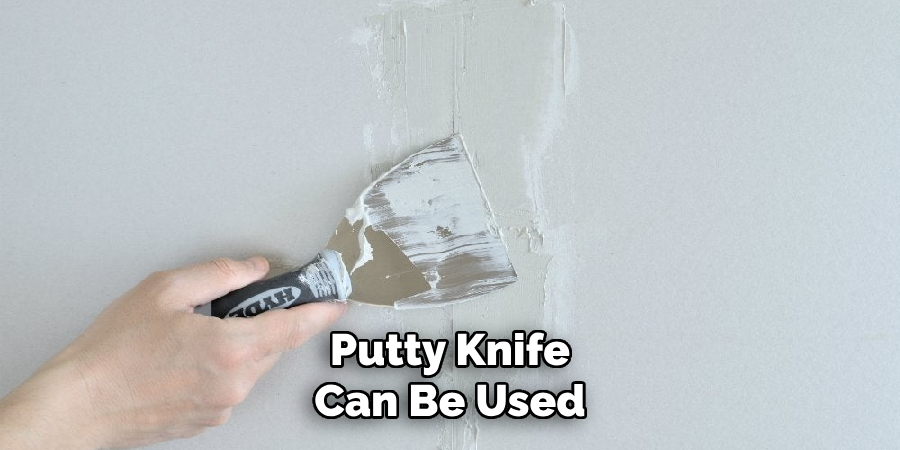
Finally, using a vacuum cleaner with a HEPA filter attachment will help ensure that all of the asbestos fibers are removed from the room once they have been stirred up during the removal process.
5. Test for Asbestos Before Removing
If you suspect that your popcorn ceiling may contain asbestos fibers, it is important to test for them before attempting any type of removal process yourself. Asbestos fibers can cause serious health issues if inhaled over long periods of time so it is best practice to always test for them first before beginning any work on an older home or building where asbestos could potentially be present.
Conclusion
In summary, if you’re unsure whether your popcorn ceiling is made of asbestos, you can follow these steps. Determine the age and appearance of the ceiling and consider getting a lab test or a professional inspection done. If asbestos is present, do not attempt to remove it yourself.
Instead, seek the help of a licensed asbestos contractor. Don’t take chances with your health and safety; take the necessary steps to ensure your home is free of asbestos. Thanks for reading our post about how to tell if your popcorn ceiling has asbestos.
